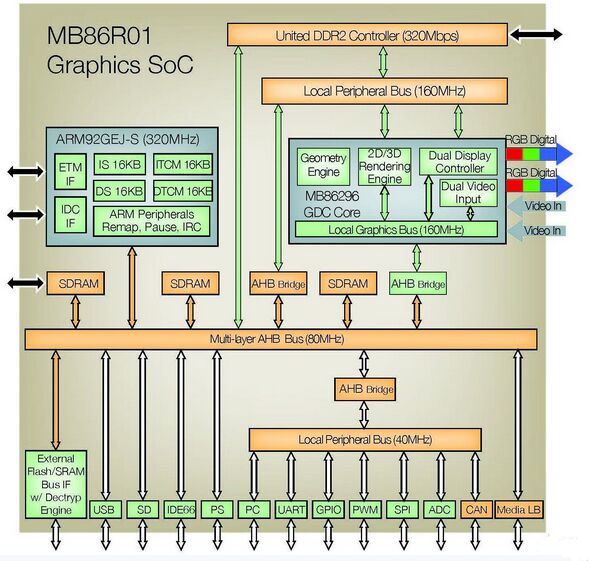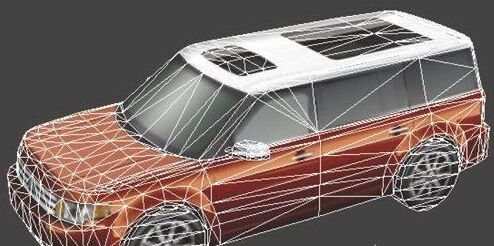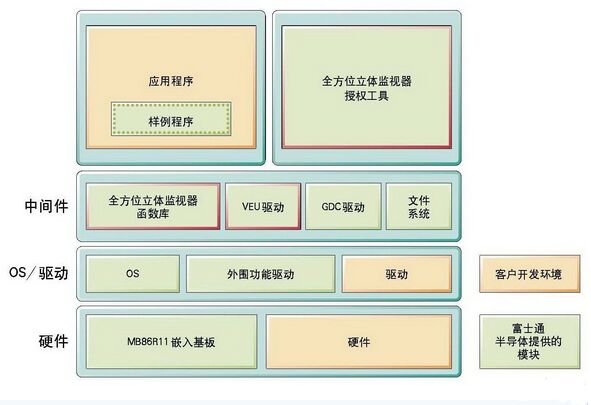Automotive car 3D technology application helps drive safe driving
3D is not a new technology. It has been widely used in the consumer electronics field, but it is still in its infancy in automotive applications, and it still needs breakthroughs in related technologies and solutions. Taking the safe driving application of the automobile as an example, in the driving process, the blind angle of the human eye is difficult to eliminate. If the high-resolution camera image of the four directions of the car can be 3D synthesized, the driver can freely change the viewing angle according to different driving situations. By getting a broader view of driving, you can accurately predict road conditions and greatly reduce the occurrence of various traffic accidents. A full-automatic stereoscopic surveillance system with driver assistance for high-resolution cameras is such a solution that helps to achieve safe driving.
This article refers to the address: http://
3D and its application in automobiles
3D is based on people's perception of space and objects, and has a deep, full perspective. 3D gives people a more intuitive and interactive experience. Generating 3D images requires a sophisticated image display controller (GDC), which in turn requires a geometry unit and a structural processing unit. Integrating these elements into an image engine provides the best performance, as shown in Figure 1.

Figure 1: Image Display Controller (GDC) Block Diagram
Many of the best image controllers are currently available for both 2D and 3D images. But in many cases, system designers are not taking full advantage of existing 3D capabilities, and this feature can bring many benefits to end users. For example, if a driver wants to know a deflated tire or a non-lighting condition, applying 2D technology requires hundreds of megabytes of preset 2D images.
With 3D technology, all of these and more requirements can be easily solved with less than a megabyte of image and geometry data. As a leader in this technology, Fujitsu has more than 10 years of experience in the embedded graphics market to design, develop and help customers integrate leading 2D and 3D image display controllers.

Figure 2: With a 3D image, a single object can be rotated to any angle, scaled to any size, highlighting any part
By using the geometry engine of the image chip, this model can now be animated in any way and placed from any angle. As long as you have a 3D model (polygon mesh and texture drawing), you can display the 3D model in all directions without providing any other data. An unlimited amount of image data can be obtained by scaling, rotating, and converting along three axes of the 3D model. As noted earlier, any amount of information and prompts such as tire data, faulty lights, and door conditions can be presented without the need for expensive flash memory or system memory.
Choose the right GDC
In order to achieve the best display and image fluency, it is especially important to choose the right and appropriate graphics display controller.
From 3D coloring to image warping, the GDC's capabilities are presented to the user in a variety of applications. High-end image display controllers can create images that dazzle consumers. Other levels of GDC can display information clearly and simply, allowing users to see what they want at a glance. GDC can be divided into the following three categories according to its cost performance: low-end QVGA screen, pre-colored graphics, including image input function; mid-range is WVGA screen, mainly based on 2D dynamic drawing, can also support 3D, with image input function; High-end SXGA or higher resolution screen, dynamic 3D drawing, multiple image input.
The first step in implementing the perfect image function in an application is to select a suitable GDC for the application target and get the desired functionality at a reasonable price. It is worth noting that the automotive industry is a relatively cost sensitive application area. For system developers, the most important task is to reduce the cost of components (BOM). For low-to-mid-range GDCs, developers can use system-on-a-chip (SoC) graphics controllers to meet requirements, but due to limited internal VRAM memory capacity and various system bottlenecks (such as bus speed), these GDC support Image capabilities, flexibility, pixel fill rate, and screen size are limited.
When performance is important and cost factors are less important, such applications can use high-end GDCs with multi-chip architectures, relying on external automotive microcontrollers to manage peripheral components such as CAN transmission operations, power supplies, and stepper motor controllers. In addition, because these GDCs do not have built-in VRAM and program flash memory, they can use external VRAM to support high-performance operation. In the future, the use of built-in VRAM can further reduce the cost of high-end automotive GDC.
Development of an all-dimensional stereo monitoring system with GDC
The car's full-scale stereo surveillance system uses the latest GDCMB86R11/MB86R12. The MB86R11/MB86R12 is equipped with an ARMCortexTM-A9 CPU, which integrates a graphics engine corresponding to OpenGLES2.0 and various peripheral interfaces in a single chip. By performing 3D image processing on 4 input images, high-quality driving scene maps can be drawn, and developers can achieve more ambitious and complex 3D applications in the future. The existing hardware and software structure of the Fujitsu Semiconductor Omnidirectional Stereo Monitoring System is shown in Figure 3.

Figure 3: Software and hardware structure
Let's take a look at the full-scale stereo surveillance system implemented by the above GDC. This system is a technique for performing 3D synthesis on a camera image mounted in four directions of a car. As a visual aid for the driver, the car is equipped with a composite system of four camera images, as shown in Figure 4. However, the prior art can only perform 2D image synthesis, so only a specific angle of view can be displayed; Like projection onto a 2D plane, it can only represent a top view viewed from above, and it is sometimes difficult to distinguish surrounding vehicles and pedestrians. The omnidirectional stereo surveillance technology can synthesize images from 4 photographic heads onto a 3D model, so that omnidirectional scenes can be displayed from any angle of view; it can project images onto a solid surface, arbitrarily change the viewing angle, and fully express hope. See the scene to improve identifiability.
Electric Hand Air Pump,Volleyball Air Pump,Portable Ball Air Pump,Ball Air Compressor
SHENZHEN SMARTNEWO TECHNOLOGY CO,. LTD , https://www.newopump.com